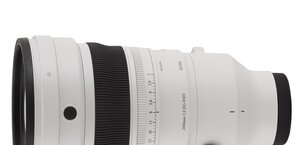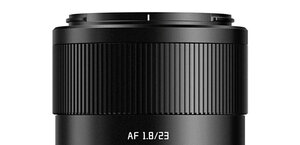Tamron SP 35 mm f/1.4 Di USD
5. Chromatic and spherical aberration
Chromatic aberration
The tested lens doesn't have practically any problems with the longitudinal chromatic aberration. Even at the maximum relative aperture and in out-of-focus areas positioned in greater distances it is difficult to notice any colouring of images. Still the rival lenses, mentioned earlier in our test, both Sigmas, the A 1.4/35, the A 1.4/40, and the Canon EF 35 mm f/1.4L II USM performed equally well. Only the Nikkor AF-S 35 mm f/1.4G lagged behind. |
Now let's check how the Tamron 1.4/35 corrects lateral chromatic aberration – the graph, showing its performance on both types of detectors and its correlation with aperture values is shown below.

Please Support UsIf you enjoy our reviews and articles, and you want us to continue our work please, support our website by donating through PayPal. The funds are going to be used for paying our editorial team, renting servers, and equipping our testing studio; only that way we will be able to continue providing you interesting content for free. |
- - - - - - - - - - - - - - - - - - - - - - - - - - - - - - - - - - - - - - - - - - - - - - - -
The values we got here can be called low or very low but on the edge of the APS-C/DX sensor, on stopping down, they start to approach medium levels. It is a weaker performance than that of both Sigma lenses and the Canon as their typical results kept close to 0.03-0.04% but also distinctly better than the results of the Nikkor 1.4/35G which, momentarily, reached almost 0.20%.
| Canon 5D III, RAW, f/1.4 | Canon 5D III, RAW, f/8.0 |

|

|
Spherical aberration
First photos from this chapter show a very slight focus shift effect – it is clear that on stopping down the lens from f/1.4 to f/2.0 the depth of field moved toward greater distances. It means there are some problems connected to spherical aberration.Defocused circles of light confirm that the correction of that aberration is not perfect. The circle before the focal point features a distinct bright rim and the one we got behind the focus doesn't have it. It's a classic symptom of spherical aberration and it means the optics cannot correct it properly. It is difficult to say whether it is a deliberate effect, connected to ensuring better appearance of out-of-focus areas, or the price you have to pay for a better correction or another optical aberration.
Still, it's worth mentioning that the level of spherical aberration cannot be high because if it was so the lens wouldn't be able to reach so good resolution values by f/1.4 and f/2.0.
| Canon 5D III, f/1.4, in front of | Canon 5D III, f/1.4, behind |

|

|






